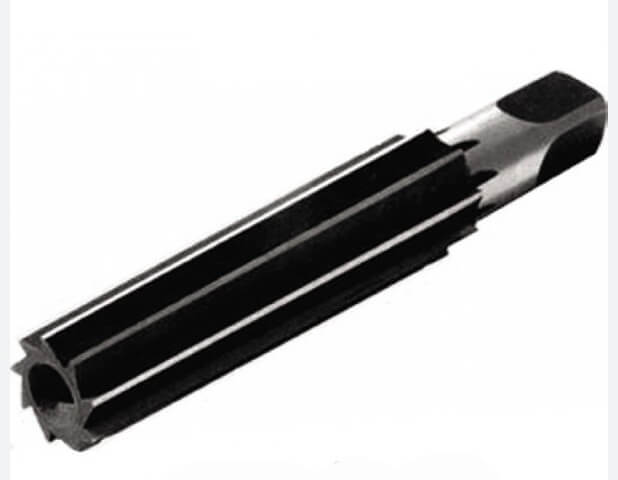Reamers are tools for making holes in parts that improve their accuracy and surface quality. The main variants of this tool are cylindrical reamer and direct manual.
The main stages of working with reaming
Reaming consists of several stages:
- Marking the surface of the part. As a result, you can determine the location and size of the hole, as well as improve the grip of the tool with the material.
- Drilling. It should have a small margin in diameter so that the reamer can remove excess material and align the walls.
- Fixing in a chuck. The reamer should not dangle and have play.
- Alignment of axes. This moment affects the accuracy and quality of processing. The reamer must be inserted into the hole so that its axis coincides with the axis of the hole. To do this, you can use guides or centering devices.
- Rough scan. The rotation speed must be such that the tool does not overheat and damage the surface.
- Finishing sweep. It improves geometric accuracy and hole roughness. To do this, a thinner and more precise reamer is used that removes the minimum amount of material.
- Smooth extraction. After the end of the deployment, you need to carefully remove the reamer from the hole without rotating it in the opposite direction. Otherwise, the cutting edges or hole surface may be damaged.
The last step is quality control. After the end of the process, you need to check whether the hole meets the specified parameters in terms of diameter, shape, position and roughness. For this, plug gauges, inside gauges, micrometers, indicators and other measuring instruments are used.
Important rules
When reaming holes, you need to follow some rules that increase the efficiency and quality of processing. Firstly, you do not need to put much pressure on the sweep or make sudden movements. This can cause the tool to overheat, damage the surface, or even get stuck in the hole.
Secondly, cutting fluids must be used. Coolant helps cool the tool and workpiece, lubricate cutting edges, remove chips, and prevent corrosion. The coolant must be supplied under sufficient pressure and in an amount that will ensure complete wetting of the surface.
Thirdly, to increase efficiency, the adjacent end surfaces of the parts are turned. If the hole is located at the end of the part or has an end part, then it is desirable to turn this surface before or after reaming. As a result, it is possible to reduce unevenness and gaps between parts, as well as improve the centering of the reamer.
It remains to be added that the available options for direct manual reamer can be found at https://www.gzsito.by/produktsiya/katalog/instrument/razvertki/razvertki-ruchnye/.




